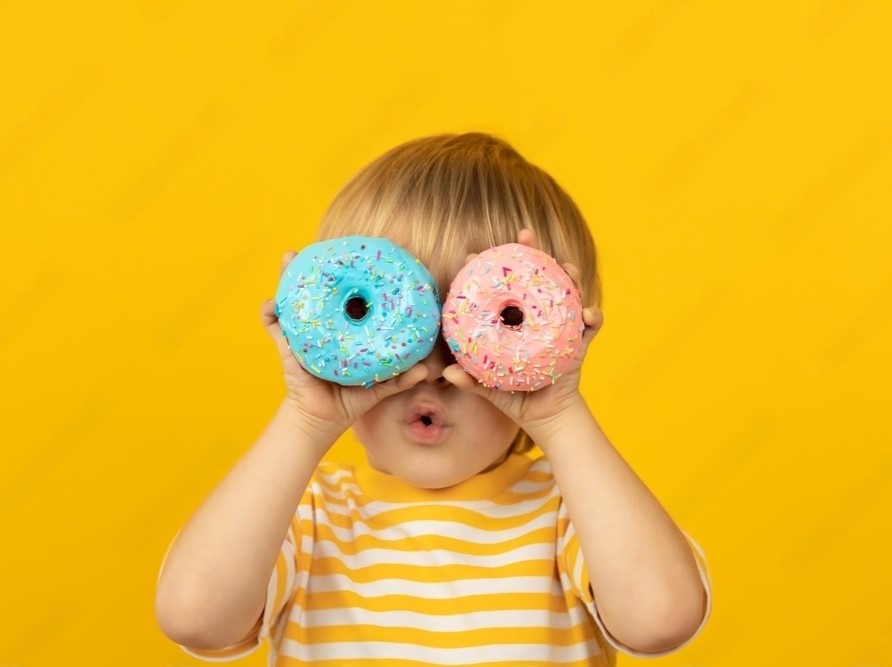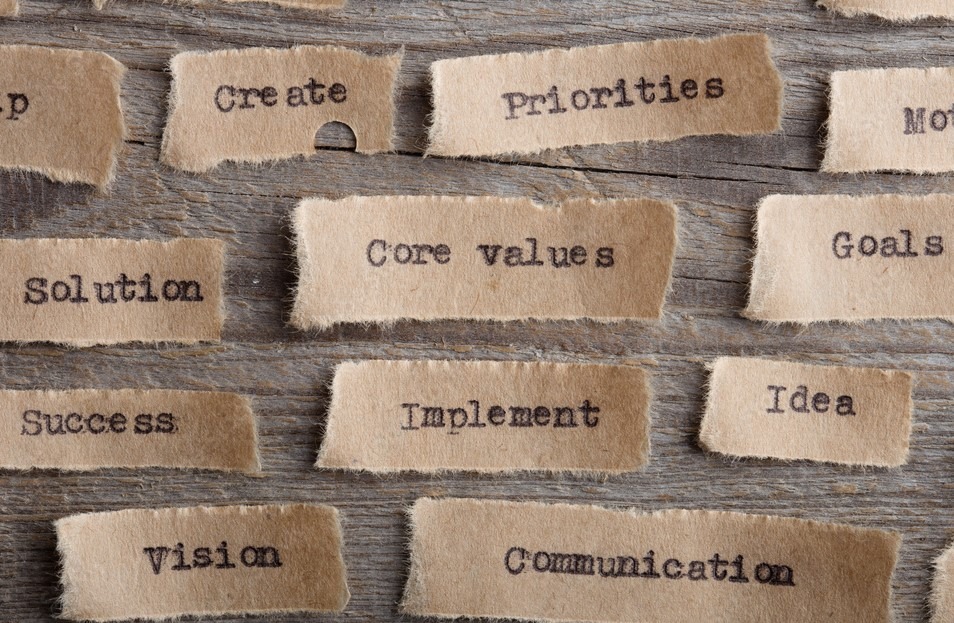More extreme and destructive than overeating, binge eating (i.e. food addiction) is compulsive in nature. Like other addictions, it is often done in secret. Feelings of guilt, shame, frustration, disgust and/or self-loathing are often part of what May (2014) terms the “Eat-Repent-Repeat” cycle. Ironically, there’s a great loss of control over eating behaviours as one attempts to use food to manage internal states.
A SECONDARY PROBLEM
As with many issues that bring people in for therapy, binge eating is considered a secondary problem. It’s really a symptom of (or rather, an attempted solution to) an underlying, primary problem that needs one’s attention. Unresolved wounds from earlier in life often contribute to the problem, but may seem unrelated to the food issue at first glance.
COMPLICATING FACTORS
Binge eating can serve as a temporary distraction from uncomfortable thoughts, emotions, and/or physical sensations. In addition to helping people avoid discomfort, it can also foster positive feelings (again, in the short term). Yummy tastes, pleasant textures, comforting smells, boosted mood and energy are particularly attracting if someone lacks other sources of joy (Davis & Carter, 2009). That being said, the tendency to overindulge in food isn’t necessarily reflective of an emptiness elsewhere in life.
There’s a stigma that overeating indicates a mere lack of willpower, but such an opinion is too simplistic. What makes binge eating uniquely challenging to manage is that the issue is a bit of a double whammy: There are both substance and behavioural addiction components to be addressed (Davis & Carter, 2009). One’s body can develop a real physical dependency on opiate-releasing, high calorie, sugar- and fat-laden foods (substance addiction). As well, reward pathways in the brain can be conditioned by the rituals associated with the food consumption (behavioural addiction).
Even more complicating is that people cannot simply escape food temptation. Whereas it is possible to abstain entirely from alcohol, drugs, pornography, or gambling, eating is an inescapable part of daily living. Avoiding trigger foods is often recommended (Volkow & Wise, 2005); however, an eating pattern that’s too restrictive in nature can also be a trigger itself (May 2014). A delicately balanced approach to treatment is important, as is patience and self-compassion.
BODY HUNGER (I.E. INTUITIVE EATING)
When people are first born, they are very in tune with their body’s natural hunger (or lack thereof). Babies will cry for food when their body signals it’s hungry and they’ll reject it when physically full. Food equals fuel. Eating is very intuitive. Then somewhere along the way different life experiences can muddle these healthy instincts.
Body hunger can present as: a grumbling and hollow feeling in one’s stomach, weakness, low energy, difficulty focusing, crankiness, a slight headache, and/or some queasiness. When these signals are present, it may be time to refuel. The body is saying that it needs to eat, not just that it wants to.
HEAD HUNGER
Dieting (e.g. calorie-counting, labelling certain foods as “good” or “bad”, and scheduling eating windows) is driven by “head hunger”. Often, using the words “should” and “shouldn’t” indicates that the head, not the body, is in the driver’s seat. These rules disconnect people from their natural hunger signals, drawing them out of their bodies and into their minds. Eating becomes a calculated process rather than an intuitive one.
A person can also learn to associate certain people, places, times, and events with eating. One’s mind may even come to believe that there are certain foods a person cannot ever pass up. In the presence of these environmental cues one’s head might say, “Mm, food!” even if their physical body isn’t hungry. This kind of linking ability is why advertisements work so well!
Various experiences may lead to head hunger becoming the primary driving force behind one’s eating habits. For example, the scarcity of food growing up can influence the value one places on it later in life. As another example, well-intentioned parents may teach their children to “be good” and eat everything on their plate. Such pressure can lead children to ignore their instinctive feelings of fullness in favour of gaining their parents’ approval. Parents may also force children to eat at times they’re not physically hungry as a preventative measure against later hunger. But hunger isn’t something to be afraid of! Nor does it follow a clock. Fluctuating hormones, nutrients, sleep and activity levels may lead to strong hunger one day and hardly any the next. Re-establishing trust in the body’s instinctive hunger rhythms and honouring those natural patterns is key to healthier living, physically and mentally (May 2014).
HEART HUNGER (I.E. EMOTIONAL EATING)
Perhaps even trickier than differentiating head from body hunger, is differentiating “body hunger” from “heart hunger”. The suddenness of hunger onset and a desire for fatty and sugary foods may suggest heart hunger is at play. Such foods can be attempted substitutes for intimacy, since they activate satisfaction like that achieved through social contact (Halvgaard, 2015).
As well, emotions often manifest as sensations in the throat, chest, and stomach, which can be mistaken for hunger. For some people, swallowing food is a way of literally pushing down feelings that are swelling up in the body. If a person has trauma in their background, they’re even more likely to confuse emotional pain with an empty stomach (Palmisano et al., 2018).
Emotional eating isn’t always about using food to regulate uncomfortable emotions though. While many people binge when they’re feeling bad, some also habitually turn to food when they’re feeling good. Food can be a marker of joy and eating can serve as a means of celebration and connecting with others. Although most people have positive associations with food, a lack of control over the indulgence may indicate a deeper issue.
MINDFUL MUNCHING: THE HUNGER SCALE TOOL
Mindfully eating with the intention of caring for one’s body is one step towards health and contentment. It involves slowing down, minimizing distractions, and honouring Body Hunger. May’s (2014) “Hunger and Fullness Scale” is a practical tool for developing this practice. It aids attunement to different hunger cues and the impacts of eating by using a simple 10-point rating system.
The lowest end of the scale, 1, is when hunger is strongest. Eating has been delayed too long despite the presence of physical hunger signals. It is a high-risk time for over-eating or binge eating. The highest end of the scale, a 10, is when one feels so full they’re in pain and/or sick from eating. The middle of the scale, a 5, is the target resting level. Here, a person feels content, not even noticing the stomach because it’s neither growling nor stretched.
At a level 4, one notices the first signs of physical hunger but can delay eating. It’s at about a level 2.5-3 that eating is most enjoyable. The goal is to get back up to that comfortable 5.
Interestingly, even though a 1-2 means a person feels starving or ravenous, they need less food to feel satiated. When the stomach is empty, it’s only about the size of one’s fist—not much food is needed to fill it up! This information is important to honour to avoid the discomfort that comes from overeating one’s way up to a 6+. If the compulsion to eat strikes when one’s already at a 5+, then something other than hunger is at play. If it happens consistently and causes distress, then it may be time to do some deeper healing work.
FOR MORE SUPPORT
Exploring one’s relationship with themself is an essential step in navigating their healthier relationship with food. An Unstuck psychologist could be a valuable companion in this endeavour. We nerd out about helping clients find and heal the past experiences that have shaped currently distressing thought patterns and behaviours! To add one of us to your support network, simply phone 780-784-8825 or email [email protected] and book a risk-free consultation today.
Shayla Drewicki, MC, RPsych
References
Davis, C. & Carter, J.C. (2009). Compulsive overeating as an addiction disorder: A review of theory and evidence. Appetite, 53(1), 1-8. doi:10.1016/j.appet.2009.05.018
Halvagaard, K. (2015). Single case study: Does EMDR psychotherapy work on emotional eating? Journal of EMDR Practice and Research, 9(4), 188-197. doi:10.1891/1933-3196.9.4.188
May, M. & Anderson, K. (2014). Eat what you love, love what you eat for binge eating: A mindful eating program for healing your relationship with food and your body, Phoenix, AZ: Am I Hungry? Publishing.
Palmisano, G. L., Innamorati, M., Sarracino, D., Bosco, A., Pergola, F., Scaltrito, D., Giorgio, B., & Vanderlinden, J. (2018). Trauma and dissociation in obese patients with and without binge eating disorder: A case – control study. Cogent Psychology, 5(1), 1-20. doi:10.1080/23311908.2018.1470483
Volkow, N.D. & Wise, R. A. (2005). How can drug addiction help us understand obesity? Nature Neuroscience, 8(5), 555-560. doi:10.1891/1933-3196.9.4.188












